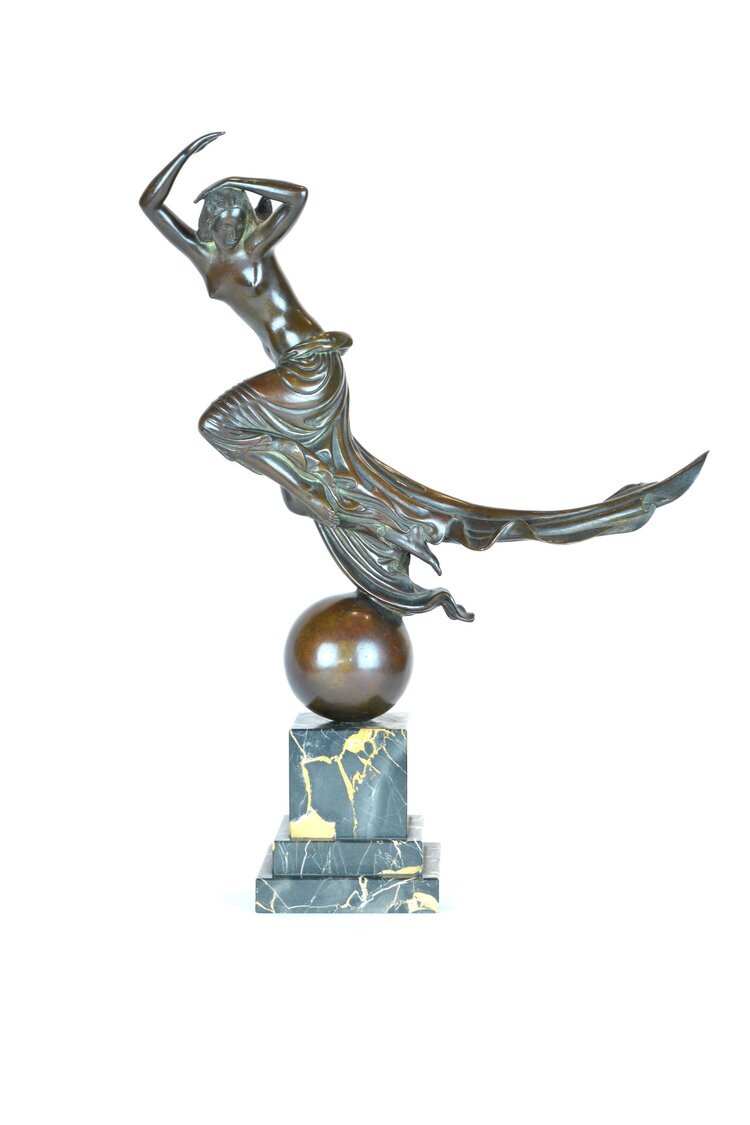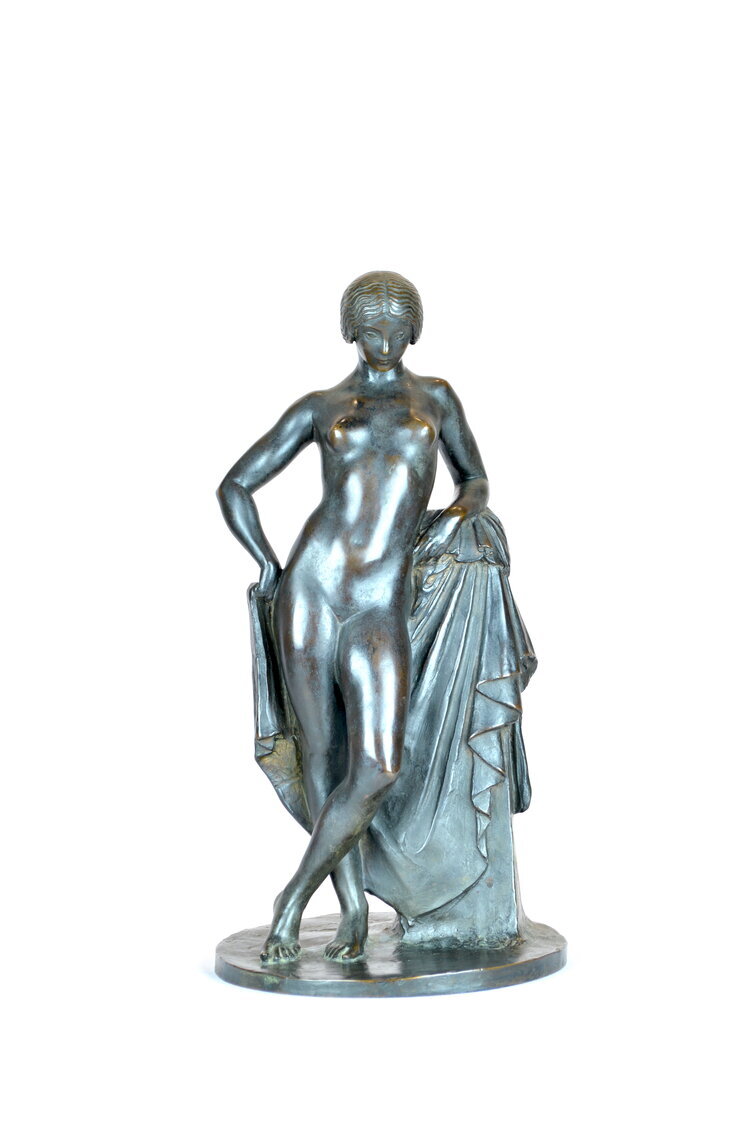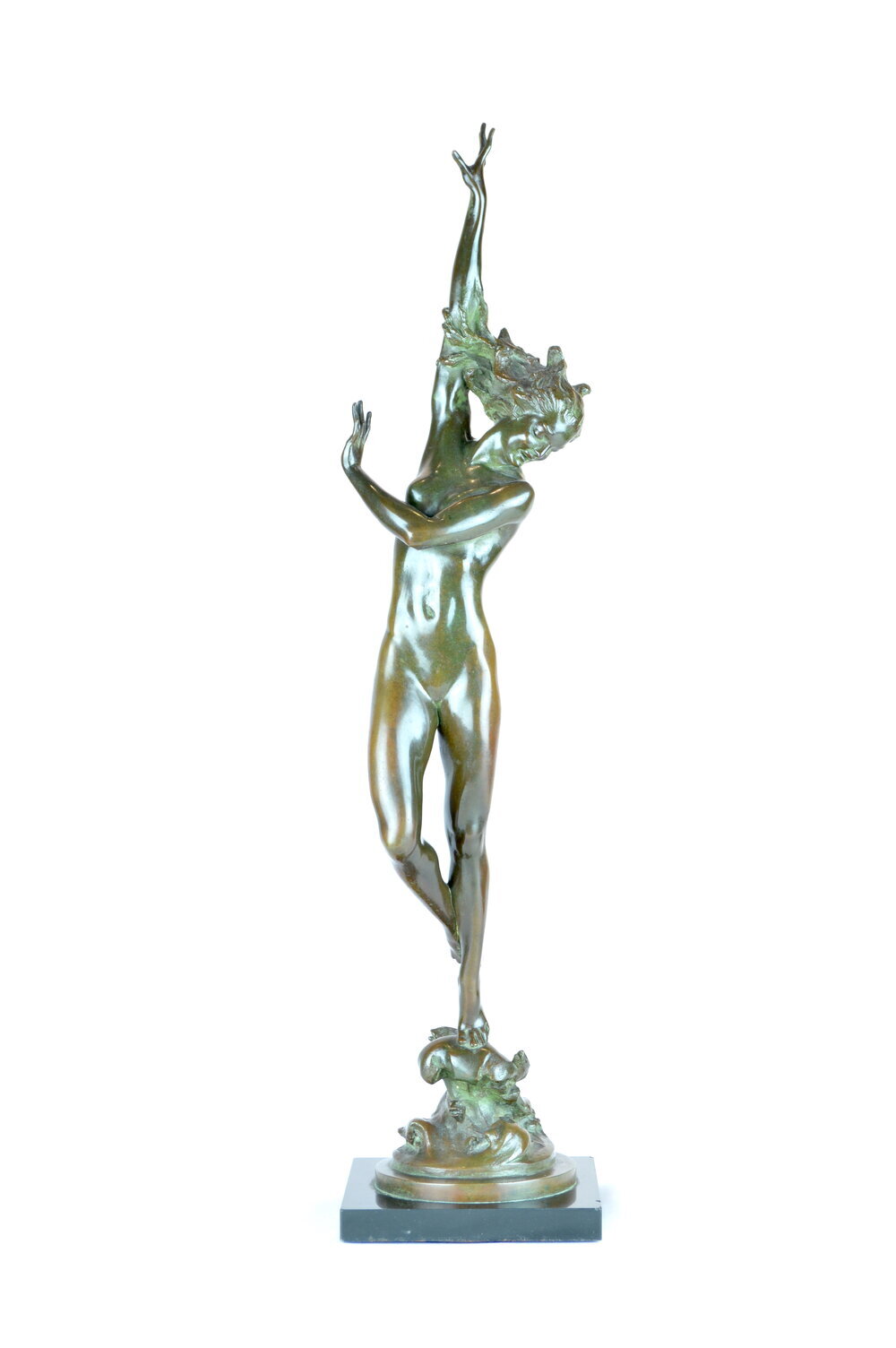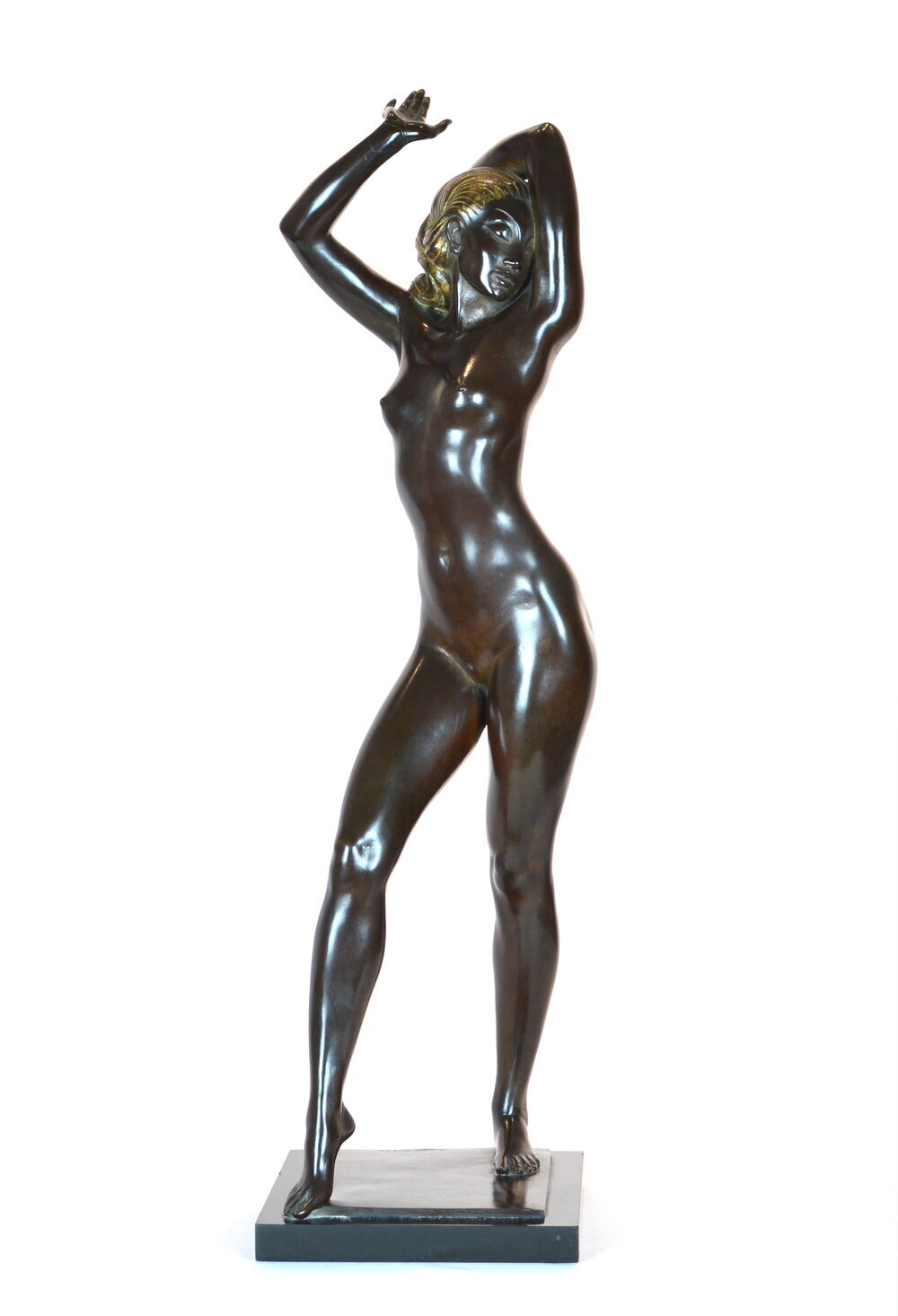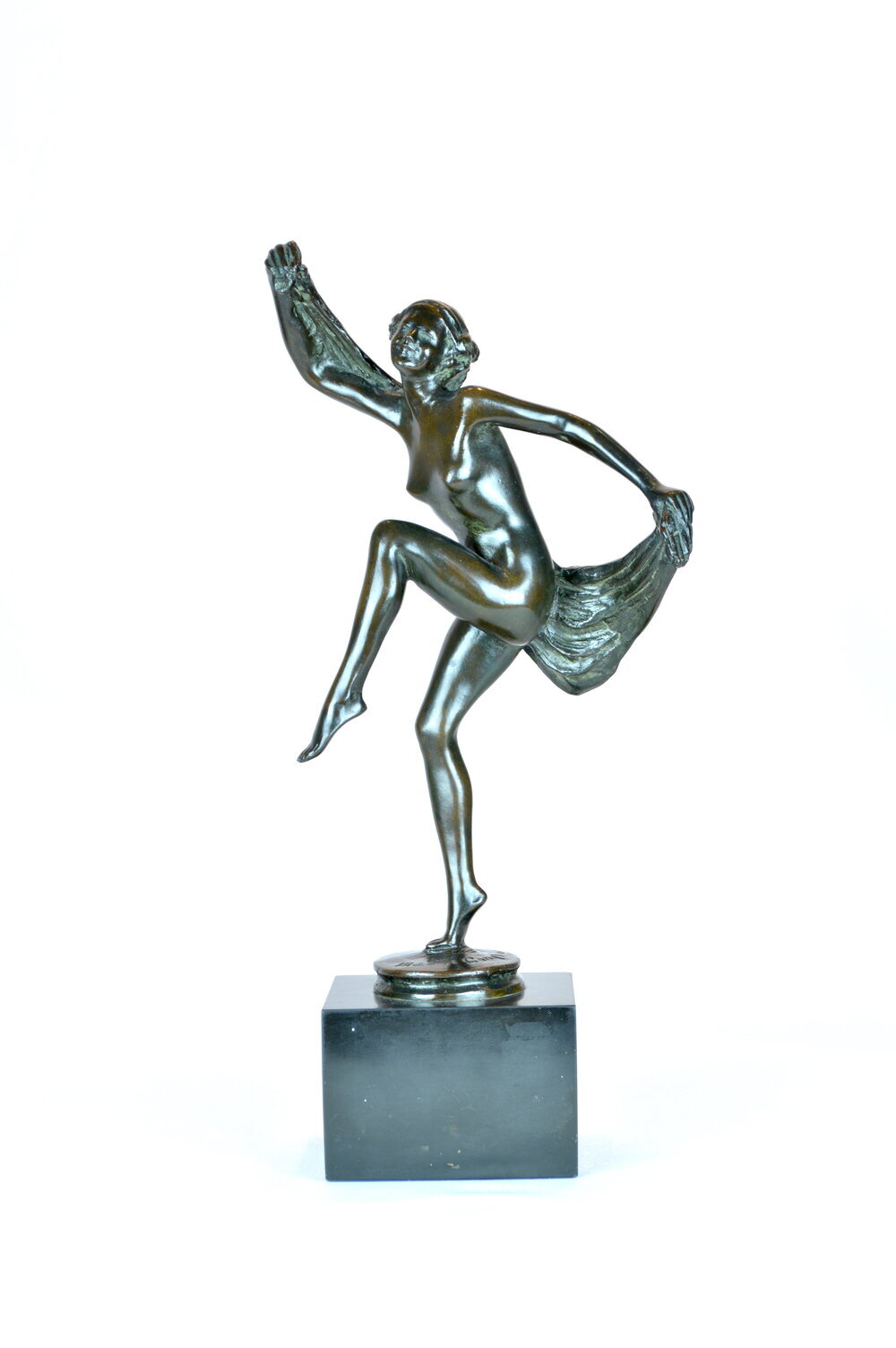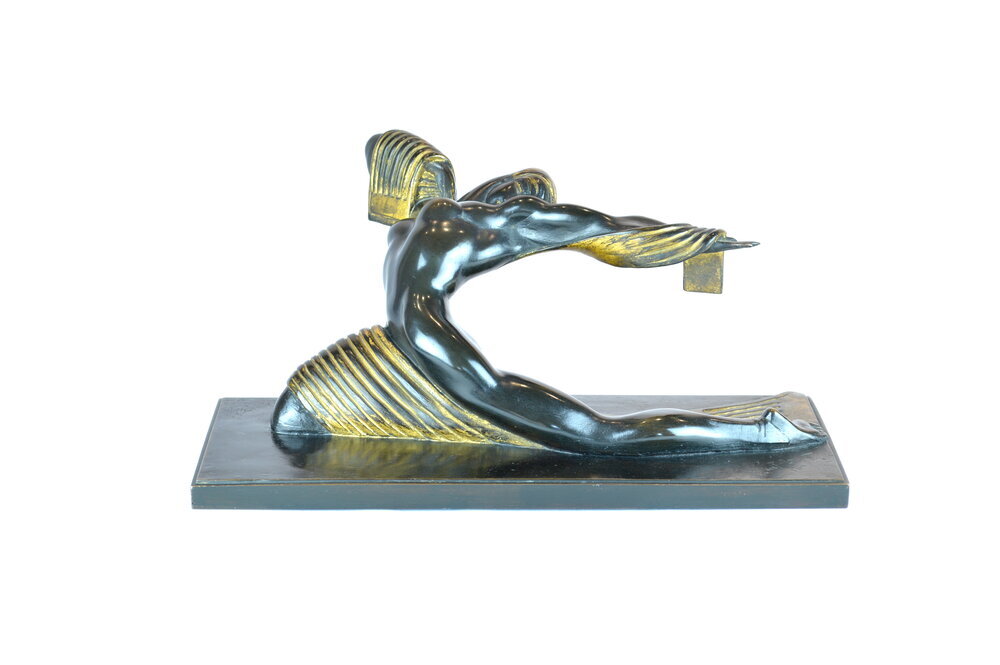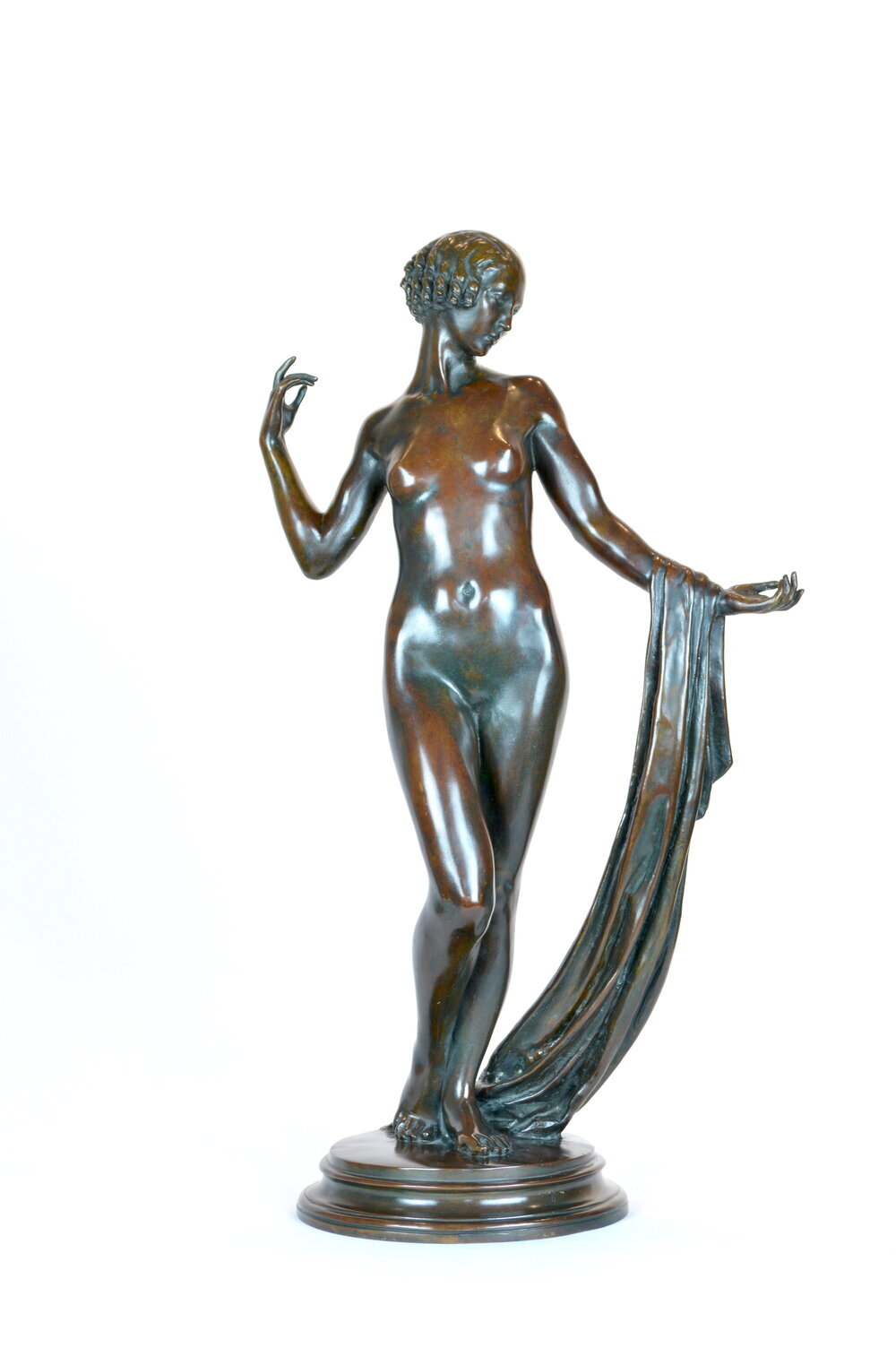Casting Call: Women in Bronze from Art Nouveau to Art Deco explores bronze depictions of the female figure in the transitional period from just before to just after World War I. Sculptures by Paul Manship, Bessie Potter Vonnoh, Harriet Whitney Frishmuth, and more reveal the tensions between the two artistic movements — Art Nouveau a reaction to the Industrial Revolution, Art Deco to World War I — as sinuous, organic lines gave way to more streamlined forms.
On view from January 25 through March 26, 2021, these bronze statues were created by American artists who brought the influences of European, particularly French sculpture and design to America. Throughout history, bronze as an art form has fallen in and out of fashion. Political and industrial developments of the 19th and 20th centuries, eventually lead to the popularity of bronze statuettes as domestic ornaments in parlors all across America.
The Industrial Revolution provided the tools necessary to make bronze sculpture available in editions. Foundries sprang up in the city of Paris whose sole purpose was to cast editions of sculptures, allowing hundreds of artists to get specialized in bronze. Artists from other nations flocked to Paris in order to study the technique.
Between 1850 and 1900, the development of specialized foundries and the proliferation of trained labor and equipment enabled sculptors to work on their native shores rather than abroad. By 1900, Roman Bronze Works Foundry, NY was the first in the US to specialize in the lost-wax casting process, which allowed a more precise replication of textural detail, the capacity for greater experimentation with complex compositions, and the ability to cast works in single pieces rather than assembling parts into a whole.
Following the First World War, the number of foundries increased due to the expanding demand for bronze statues required for war memorials all across Europe. Artists began experimenting with the material, using new techniques such as the lost-wax casting process - testing to see if bronze as a medium would meet their artistic visions.
As artists became more comfortable working with bronze, compositions became more complex and bold, organic forms of Art Nouveau morphed into the sleek structured forms of Art Deco, and patrons eagerly purchased fountain and parlor pieces through galleries and exhibitions, bronze showrooms such as Tiffany & Co. and Gorham, and of course through the foundries and sculptors themself.

